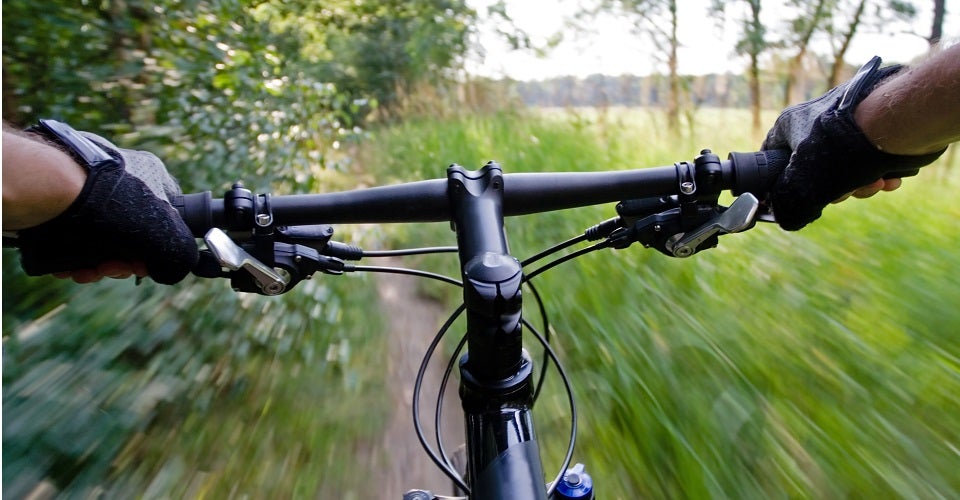
Our Editors independently research, test, and rate what we feel are the best products. We use affiliate links and may receive a small commission on purchases.
Handlebars have an important job. Of course they are your primary method of steering but they also support a lot of your weight.
As you ride down a trail, rail corners, land drops and jumps, your handlebars have a lot of force exerted upon them.
On top of this, the shape of your handlebars has an effect on the handling of your bike as well as influencing how comfortable your riding position is.
When choosing a set of the best MTB handlebars, it is important not only to choose one that can put up with the kind of riding you do but also find one that will be comfortable to use.
If you are looking for some new handlebars, you are in the right place. Were going to look at some top rated MTB handlebars, then we’ll talk about how to choose the right handlebars for you in our guide.
Best Mountain Bike Handlebars
For more of my MTB gear recommendations, have a look through these popular Outside Pursuits guide links: MTB Helmets, MTB Pedals, MTB Shoes.
Quick Answer: The 5 Best Rated MTB Handlebars For 2021
- Race Face Atlas FR Riser Handlebar
- Spank Oozy Vibrocore Bars
- Thomson MTB Carbon Cross Country Handlebar
- Race Face Aeffect 35 10mm Rise Handlebar
- Syntace Vector Carbon High20 Handlebar
Our reviews of the top rated MTB handlebars along with our comparison table and buyers guide will help you choose the right handlebar for your bike.
MTB Handlebars Reviewed
#1 Race Face Atlas FR Riser Handlebar
For those just starting to ask themselves where trail riding ends and enduro starts, the Spank Oozy will still do the job. It is however only recommended for “light enduro” use.
When the downhills get tough, the drops and jumps start getting really scary (as opposed to just fun scary) and you find yourself hurtling down big mountain trails at speeds that would make your mother cringe….
You will need a handlebar that can put up with some serious abuse.
And that is where the Atlas handlebar comes in.
The 35mm clamp size add the stiffness you need in these conditions (yes, if you do not have one already, you will also need to purchase a 35mm stem to clamp it in).
185mm is as much a width as you need and cut marks will help you reduce this if needed. The Atlas is available as a flat bar with 9 degrees backsweep.
All other models have 8 degrees of backsweep with between 10mm, 20mm or 35mm rise, and between 4 and 5 degrees of upsweep.
Race Face do actually endorse this bar for downhill racing too and some models are up to 800mm wide. Edging out the competition, I think the Atlas FR Riser are the best MTB handlebars.
#2 Spank Oozy Vibrocore Bars
For trail riders who like to spend long hours hammering their bikes through rough terrain, Spank have your back.
The Oozy Vibrocore is an aluminum bar with a special foam injected into the center that absorbs vibrations from the trails, preventing hand fatigue.
The alloy used is manufactured with micro-grain refinement, making the bar strong and light (the light alloy balances the extra weight added by the foam).
The 780mm width is perfect for trail use and alongside the reference marks at the clamp point, there are cut marks on the ends of the bars.
A modest 5mm rise and 6 degrees of backsweep keeps your weight relatively low and forward on the bike for an aggressive stance.
#3 Thomson MTB Carbon Cross Country Handlebar
 At 730mm, this is not the widest bar available, but it is a lightweight option for speedy XC racers and certainly wide enough for this discipline.
At 730mm, this is not the widest bar available, but it is a lightweight option for speedy XC racers and certainly wide enough for this discipline.
It is a flat bar with no rise and an 8 degree backsweep. Thomson use three different strengths of carbon in their bars, using the strongest blends where it is needed most and reducing weight elsewhere.
The result is a lightweight 12 ounce handlebar that will complement the rest of your racing setup. The ends of the bar are further reinforced to avoid damage in case you crash.
If you want it even shorter, there are cut marks to help you reduce the width. There is also a titanium version available with 6 degrees of backsweep. I think the Thompson is the best carbon mtb handlebars for a reasonable price.
#4 Race Face Aeffect 35 10mm Rise Handlebar
A 35mm clamp size bar for XC and trail use. The bigger clamp size means that it is heavier than bars for proper weight conscious racing, but is is much more affordable than lightweight carbon bars.
760mm is a great width for the casual trail rider and it has 8 degrees of backsweep with 5 degrees of upsweep. The Aeffect is available with 10mm of rise or a 20mm version for a more upright riding position.
#5 Syntace Vector Carbon High20 Handlebar
This 780mm wide carbon fiber bar is a very popular choice for downhill use. It has a backsweep of 12 degrees, an upsweep of 8 degrees and a rise of 30mm.
A 10mm rise version is available, as well as a 5mm rise carbon version. It has a friction particle coating on the clamp area to prevent slippage, as well as a titanium mesh inside the to prevent damage from overtightening the stem clamp.
Note: All models are designed and manufactured in Germany and they are also VR-3 approved, which means they have survived the most extreme testing that is carried out on handlebars.
Mountain Bike Handlebars Comparison
| MTB Handlebars | Material | Width | Back Sweep | Rise | Rating | |
|---|---|---|---|---|---|---|
| Race Face Atlas FR Riser Handlebar | Aluminum Alloy | 785mm | 8° | Flat, 12.7mm and 31.75mm | 4.7 / 5.0 | |
| Spank Oozy Vibrocore Bars | Aluminum Alloy | 760mm | 6° | 5mm | 4.0 / 5.0 | |
| Thomson MTB Carbon Cross Country Handlebar | Carbon fiber | 730mm | 8° | Flat | 4.5 / 5.0 | |
| Race Face Aeffect 35 Handlebar | 2014 aluminum | 760mm | 8° | 10mm | 4.6 / 5.0 | |
| Syntace Vector 7075 Handlebar | Carbon fiber | 780mm | 8° | 20mm | 5.0 / 5.0 |
How to Choose the Best MTB Handlebars
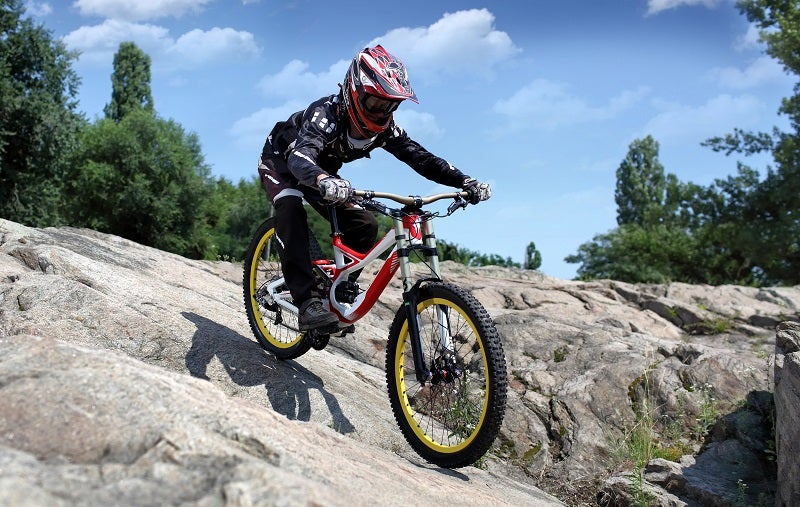
Width
For a good reason, wide handlebars are currently popular and it is likely to stay that way. A width of 530mm used to be the standard but as more extreme mountain biking styles have become more popular, it has been recognized that a wider bar gives more control.
This is due to the extra leverage created. The further away your hands move from the stem, the less force is needed to counter the wheel and handlebars being pushed around by uneven trails.
Faster riding mean more force has to be countered, so a wider bar makes this easier.
When switching from narrow bars to wider ones, the difference in control is instantly noticeable, and most riders have come to see this. It is therefore unlikely that we will see the trend reverse.
If you spend lots of time threading your bike through narrow gaps between trees, a wide handlebar will not necessarily be easy to fit through.
Granted, the gap may be bigger than your handlebar, but do you really want to ride at speed between two trees with only a couple of centimeters breathing space on each side of your bars?
Wider bars also make breathing easier as your chest is allowed to expand more. To see what we mean, put both arms straight out in front of you with your hands about 20cm apart.
Breath in as deep as you can.
Now increase the distance between your hands and try again. Keep increasing the distance and you should notice that you can get more air into your lungs.
Wide bars are not for everyone. Shorter riders have shorter arms, so if they have a wide bar, they will have a hard time reaching them properly.
The extreme wide arm stance that this causes puts them in a poor riding position with their head far too close to the stem.
It is common to see kids at bike parks running wide bars like their heroes, but they do not realize that these bars are having a negative effect on their control.
So what width do you need?
We recommend that you use a handlebar that is at between 720mm for short riders and 780mm for taller riders.
If you are into downhill, you may want a bar that is 800mm wide. Don’t forget to consider where you ride as well. Narrow trees may mean you need a narrower bar.
It is possible to find handlebars for extreme downhill racing that are 860mm wide, but this is overkill for the average rider. If you search around long enough, you can even find bars that are 1000mm wide, but we will not tell you where!
If you need them, you will find them!
Please note that steering is made slower by wider bars, so this needs to be balanced by a short stem. The wider the bars, the shorter the stem you need. A stem length of 50-70mm should work for you. Bars wider than 760mm may need a 35mm or 40mm stem.
Clamp Size
Every handlebar gets clamped into a stem. Think about a thin metal pipe and a big one. They small one is easy to bend, whereas the bigger one is harder to bend.
Handlebars are just glorified pipes and the same stiffness rule applies. The wider the handlebar is at the clamp, the stiffer it is.
A bigger clamping area also means that less clamping force is needed, which is an advantage when using carbon bars that can be damaged by the stem clamp.
25.4mm used to be the standard clamp size but this has been replaced by 31.8mm for more stiffness. A few brands also offer handlebars with 35mm clamp sizes for even more stiffness. Unless you are into extreme riding, 31.8 is the clamp size for you.
In case you were wondering, all mountain bike handlebars have a diameter of 22.2mm where the grips are attached, so you do not have to worry about your new bars being compatible with your existing grips.
Flat or Riser MTB Handlebars
Rise refers to the difference in height between the center of the handlebar where it is clamped in the stem and the center of where it has tapered down to the 22.2mm diameter.
Some handlebars are completely flat and these are usually used by XC racers as they are forced into a low, aerodynamic position on the bike. More rise helps taller riders sit comfortably on the bike, and can help the average rider have more control in steep terrain.
Riser Bar vs Flat Bar
Bars with a big rise used to be popular, but advances in suspension fork technology have made longer fork travel available to the masses, pushing up the cockpit height.
To counteract this, the rise on handlebars has been reduced. It is unusual to find a bar with more than 50mm rise these days. Even some downhill rider prefer a completely flat bar.
Do not forget that some stems have rise (or even negative rise), so this will also affect the final height that your hands sit at.
Sweep
Handlebars are not straight. Even the flat ones. To make them comfortable to hold for long hours of riding, they have a certain amount of upsweep and backsweep, measured as an angle in degrees.
Backsweep – is the angle at which the ends of the bar are bent back away from the stem clamp (horizontal angle).
Upsweep – is the angle at which the ends bend up away from the stem clamp (vertical angle).
Modern handlebars usually have a backsweep between 6 degrees and 15 degrees and an upsweep between 4 degrees and 6 degrees. What works for you depends on a number of factors, the most important one being personal preference.
The angle of your stem, fork length, frame geometry etc will all influence exactly what handlebar shape is comfortable for you. Do not forget that you can rotate the bar in the stem clamp to fine tune the position of the bar.
As you do so, the backsweep will raise or lower the final height of the ends of the bar. Likewise, the upsweep with make the ends move forward or back as the bar is rotated.
Try experimenting with different positions of your handlebars to see what effect it has on your riding and comfort.
For example, rotating a bar forwards will put more of your weight on the bars, giving the front tire more grip and putting you in a more aggressive riding position.
On the other hand, rotating the bar backwards may make you sit up more, which is more comfortable for long or multi-day rides.
MTB Handle Bar Geometry
Now that we have talked about Sweep and Rise, lets see what they look like:
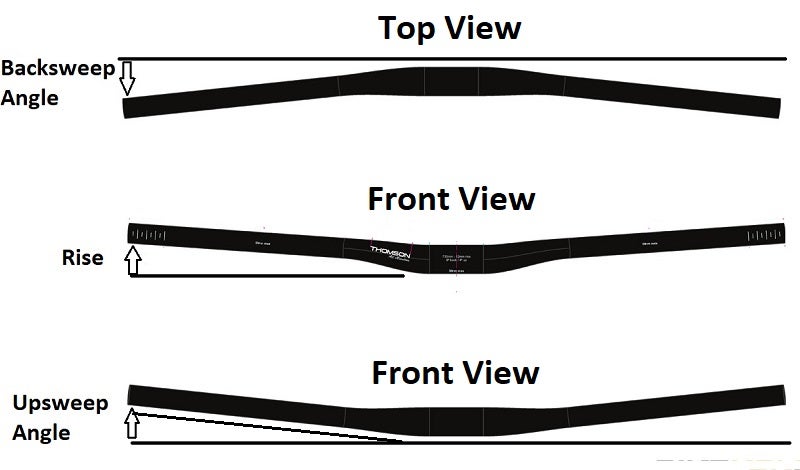
Material
You have a choice of three materials when it comes to handlebars.
Aluminum alloy – is the most common, with different alloys on offer.
Carbon handlebars – are lighter and stiffer and thanks to modern manufacturing techniques, just as strong or stronger than alloy models.
Titanium – our third choice offers high strength and some flex for comfort. Titanium is expensive and not the choice of the average rider.
Reference and Cut Marks
Although not a deal breaker if not present, reference marks help you set the angle of your handlebars and ensure that it is central in the clamp. This is especially useful when experimenting with different setups, or when rebuilding your bike.
Cut marks help you know where to saw if you are reducing the width of your bars. Before getting the hacksaw out, make absolutely sure that the new narrower width of your bars is really how you want them.
Once you have cut the end off, there is no going back. Move your grips and controls further inboard and test the setup for a couple of weeks to decide if that width is for you.
I hope this guide was helpful in picking the best MTB handlebars to fit your needs. If you want to comment or recommend handlebars I didn’t include, please use my contact form to get in touch.
Have fun and be safe out there!
How We Researched
To come up with the top mountain biking helmets, we researched a variety of sources for reviews such as Competitivecyclist, JensenUSA, REI, EVO along with our own personal experience.
We also consulted online magazines for product research and reviews to get as much unbiased information as we could. To help weed out fake reviews we used Fakespot.com to make sure we only looked at genuine reviews.
With so much quality gear available, we had to narrow it down based on what we felt were the best options were for the price. The author, Richard Bailey has a wide background in mountain biking in a variety of countries, terrain types and bike packing for weeks on end.
The author has decades of experience and is eager to share his knowledge with readers.
To help narrow down the selection we used personal experiences along with recommendations from fellow MTB bikers, bloggers and bike shops.
After extensive research, we came up with our list to help you choose the right one for you.

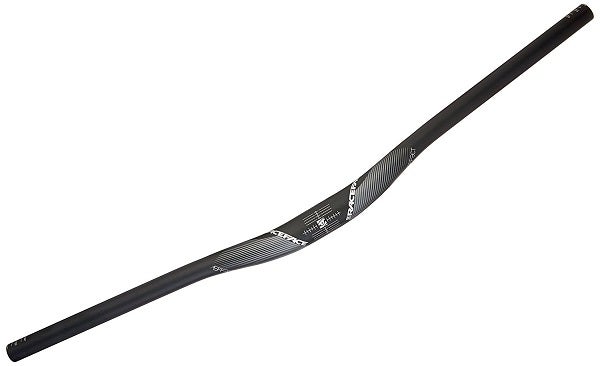
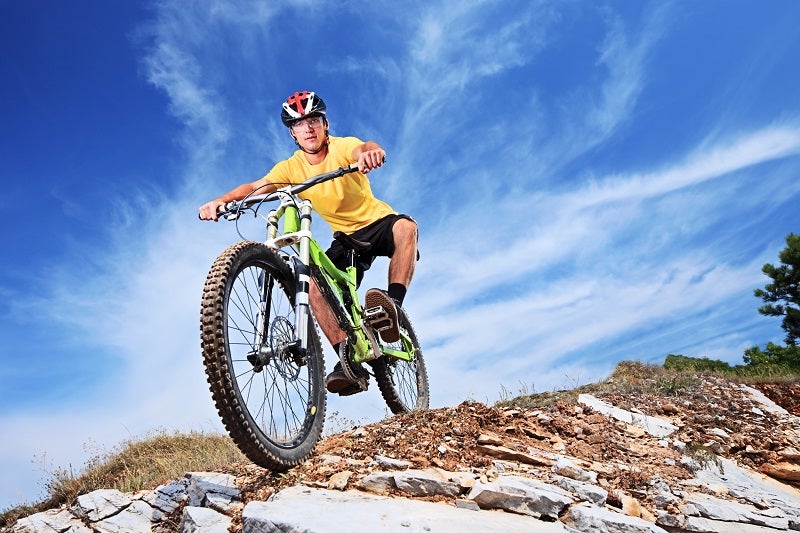

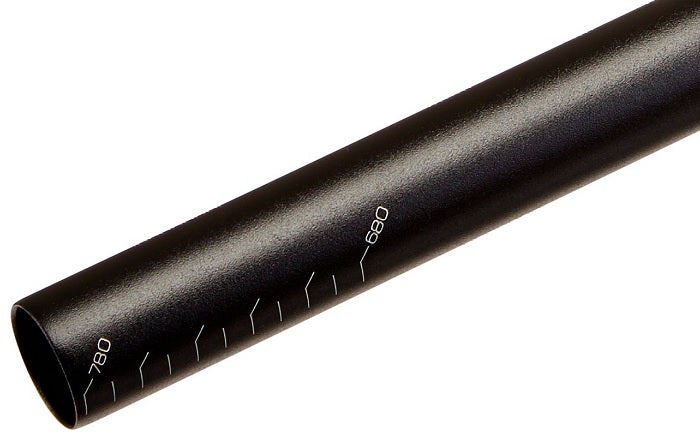
Love Aluminum handlebars. Lightweight ,strong and very comfortable. Did exactly what I needed and was an easy install. Had to buy/install a longer front brake cable but others were long enough to still fit.